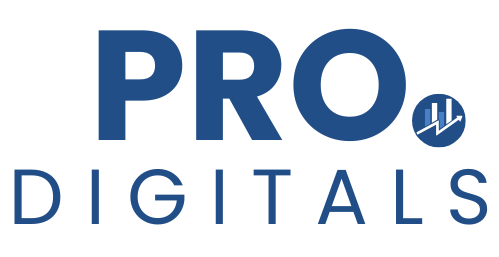Google’s algorithm updates are unpredictable. Just when marketers think they’ve cracked the code, a new variable enters the equation. Enter Core Web Vitals—Google’s way of grading your website’s user experience like a strict professor. These metrics aren’t suggestions; they’re non-negotiable benchmarks for SEO success.
Decoding Core Web Vitals: The SEO Game Changer
Core Web Vitals are a trio of performance metrics designed to quantify how users perceive a webpage’s speed, responsiveness, and visual stability. Introduced as part of Google’s Page Experience Update, they’ve been influencing rankings since 2021. Ignoring them is like showing up to a marathon in flip-flops—you won’t get far.
The Three Pillars of Core Web Vitals
- Largest Contentful Paint (LCP)
- Measures loading performance.
- Target: ≤2.5 seconds.
- First Input Delay (FID)
- Gauges interactivity.
- Target: ≤100 milliseconds.
- Cumulative Layout Shift (CLS)
- Assesses visual stability.
- Target: ≤0.1.
These metrics reflect real-world frustrations. Slow loads? Unresponsive buttons? Shifting layouts? Users abandon such sites faster than a sinking ship.
Why Core Web Vitals Are SEO’s New North Star
Google’s mission is straightforward: prioritize websites that offer seamless experiences. Here’s why these metrics are critical:
- User Experience (UX)
- A laggy site feels like talking to someone buffering on a Zoom call—frustrating and inefficient.
- Bounce Rates
- Pages with poor LCP see bounce rates spike by 32% (source: Portent).
- Mobile Dominance
- Over 60% of searches happen on mobile. Core Web Vitals are optimized for these users.
Imagine a bookstore with amazing titles but broken air conditioning. Visitors might leave before buying anything.
A Microscopic Look at Each Metric
1. Largest Contentful Paint (LCP): Speed Is Non-Negotiable
LCP tracks how long it takes for the largest visible element (hero image, headline, etc.) to load. Beyond 2.5 seconds? You’re testing user patience.
Why LCP Stumbles
- Unoptimized Media: A 5MB banner image is overkill.
- Server Lag: Shared hosting can throttle speed.
- Render-Blocking Code: JavaScript/CSS delaying paint.
Turbocharging LCP
- Compress Images: Use WebP or AVIF formats.
- Leverage a CDN: Distribute load geographically.
- Prioritize Critical Resources: Defer non-essential scripts.
Fun fact: Walmart found that every 1-second improvement in load time boosted conversions by **2%.
2. First Input Delay (FID): The Responsiveness Litmus Test
FID measures the delay between a user’s first interaction (click, scroll, tap) and the browser’s response. Aim for sub-100ms—anything slower feels broken.
FID’s Usual Suspects
- JavaScript Overload: Too many scripts hog the main thread.
- Third-Party Scripts: Ads, analytics, and trackers add latency.
- Unoptimized Event Handlers: Poorly coded click listeners.
Sharpening FID
- Code Splitting: Load JavaScript incrementally.
- Web Workers: Offload heavy computations.
- Audit Third Parties: Use tools like Lighthouse to identify bottlenecks.
Ever clicked a “Submit” button only to stare at a frozen screen? That’s FID failure in action.
3. Cumulative Layout Shift (CLS): The Silent UX Killer
CLS quantifies unexpected layout shifts during loading. Elements moving unpredictably? That’s a recipe for rage-clicks.
CLS Nightmares
- Late-Loading Ads: Pushing content down after rendering.
- Dynamic Embeds: Social media widgets resizing abruptly.
- Font FOUT/FOIT: Text reflowing when fonts finally load.
Stabilizing CLS
- Aspect Ratio Boxes: Reserve space for images/videos.
- Preload Key Resources: Fonts, above-the-fold assets.
- Avoid Dynamic Injections: Unless dimensions are predefined.
Pro tip: Test CLS on a throttled 3G connection—real users don’t always have 5G.
Tools to Diagnose Core Web Vitals
You can’t improve what you don’t measure. These tools are indispensable:
- Google PageSpeed Insights: Scores LCP, FID, CLS with actionable tips.
- Chrome DevTools: Lighthouse audits simulate mobile performance.
- Search Console’s Core Web Vitals Report: Identifies poor-performing URLs.
Don’t just check your homepage. Product pages and blog posts often harbor hidden issues.
Debunking Core Web Vitals Myths
Myth 1: “They’re the Only Ranking Factor”
Content and backlinks still reign. But poor Core Web Vitals can cap your rankings.
Myth 2: “Desktop Performance Doesn’t Matter”
Google uses mobile-first indexing. Desktop scores are secondary.
Myth 3: “One Fix Solves Everything”
Websites are living entities. Updates, new plugins, or traffic surges can reintroduce issues.
Case Study: The E-Commerce Turnaround
An online retailer’s product pages had an LCP of 4.8 seconds—abysmal. After:
- Switching to a performance-optimized theme.
- Implementing lazy loading with placeholders.
- Upgrading to a dedicated server.
Result: LCP dropped to 2.1 seconds, conversions rose 20%, and organic traffic climbed 15% in three months.
Prioritizing Fixes: A Strategic Approach
Not all fixes are equal. Focus on:
- High-Impact Pages: Homepages, product listings, checkout flows.
- Quick Wins: Image compression, browser caching, CDN integration.
- Technical Debt: Refactor bloated JavaScript, eliminate render-blocking resources.
The Horizon: What’s Next for Core Web Vitals?
Google is reportedly phasing out FID for Interaction to Next Paint (INP) by 2024. INP measures responsiveness more holistically. Staying ahead means adapting early.
The Bottom Line
Core Web Vitals are the bridge between technical SEO and human experience. They’re not just metrics—they’re a reflection of how users feel about your site.
Key Takeaways:
- Speed (LCP), responsiveness (FID), and stability (CLS) are critical.
- Mobile performance can’t be an afterthought.
- Continuous monitoring beats one-time fixes.
In the SEO arms race, optimizing for Core Web Vitals isn’t optional. It’s survival. Now, go audit your site—before your competitors do it first. 🚀

